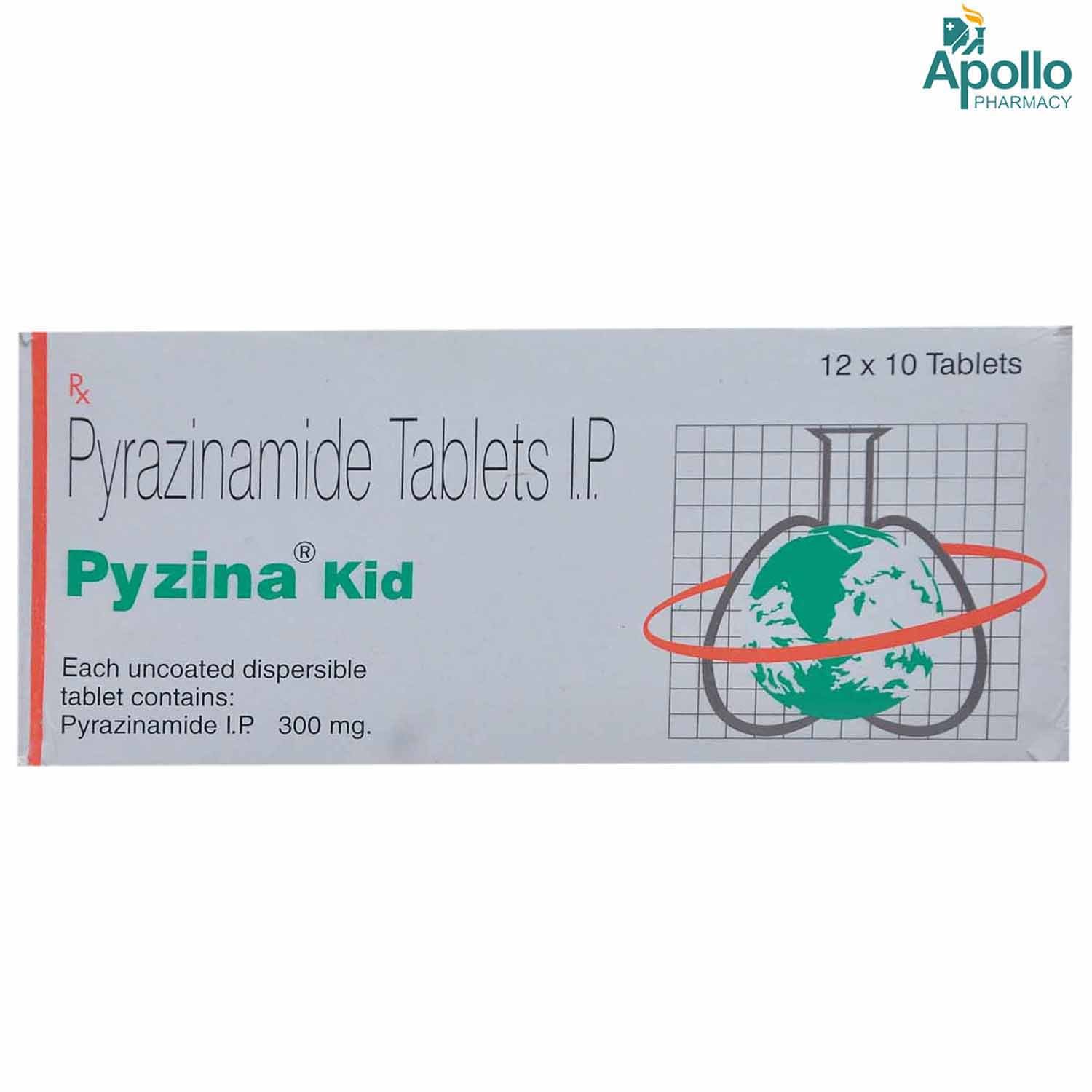Solonex Tablet 10's
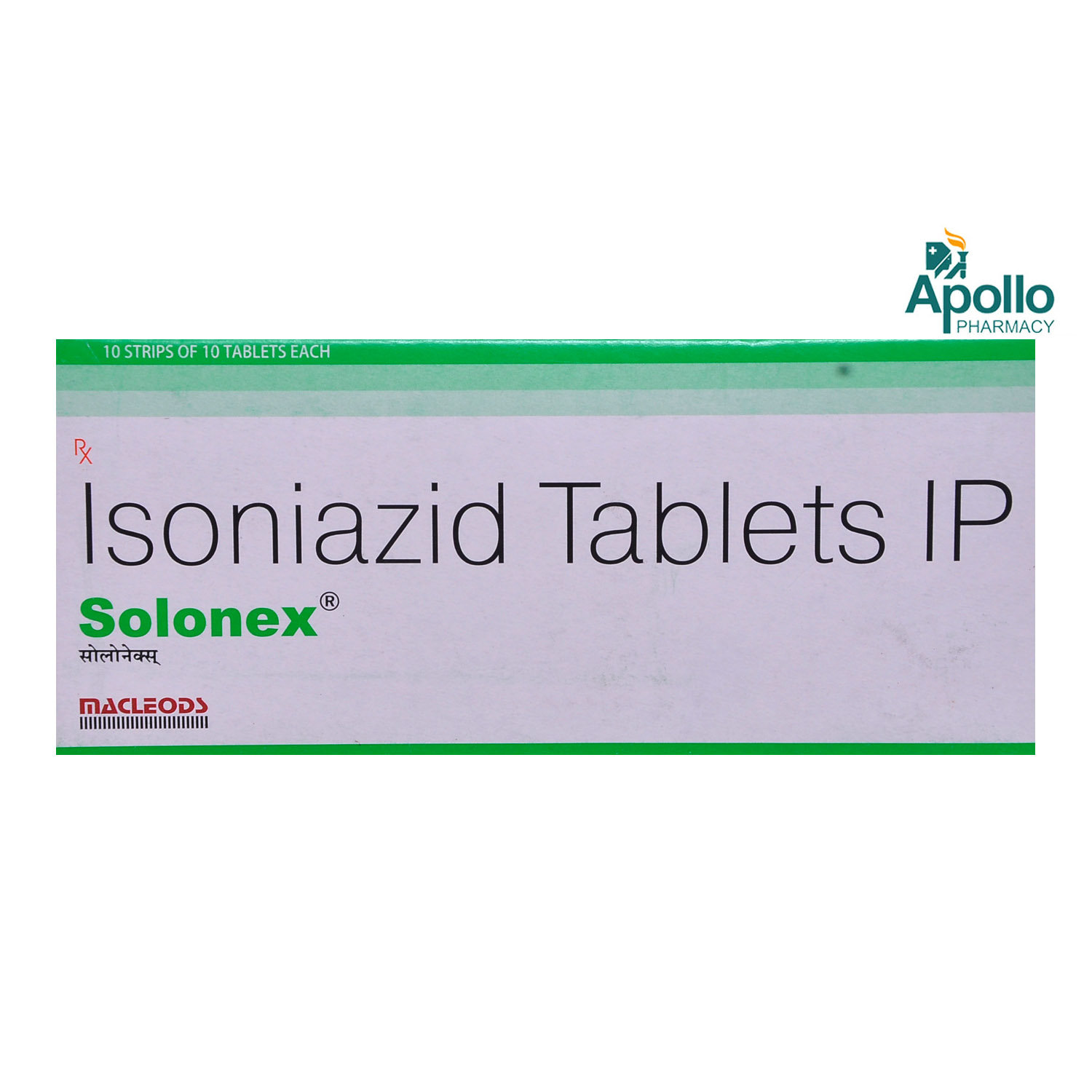
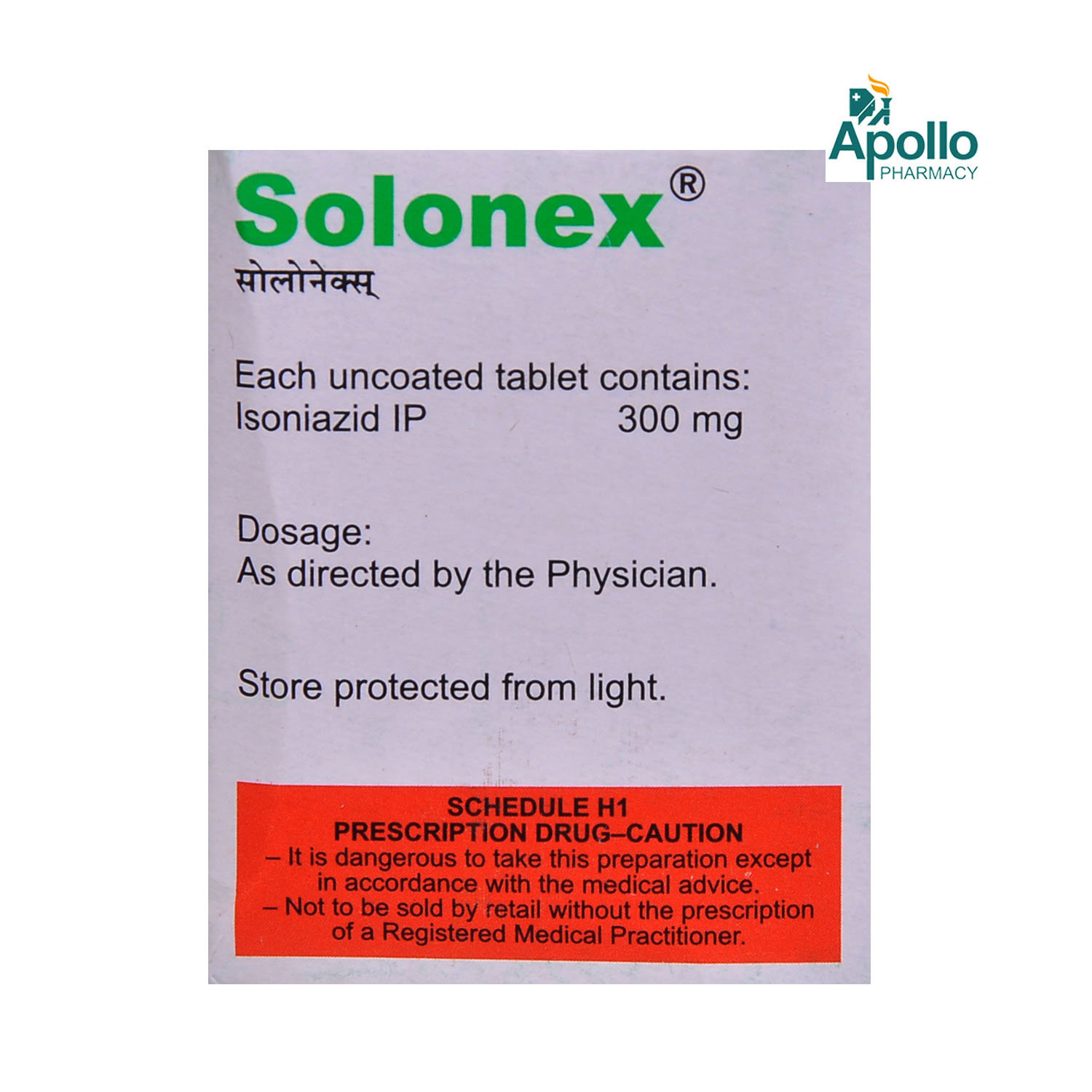
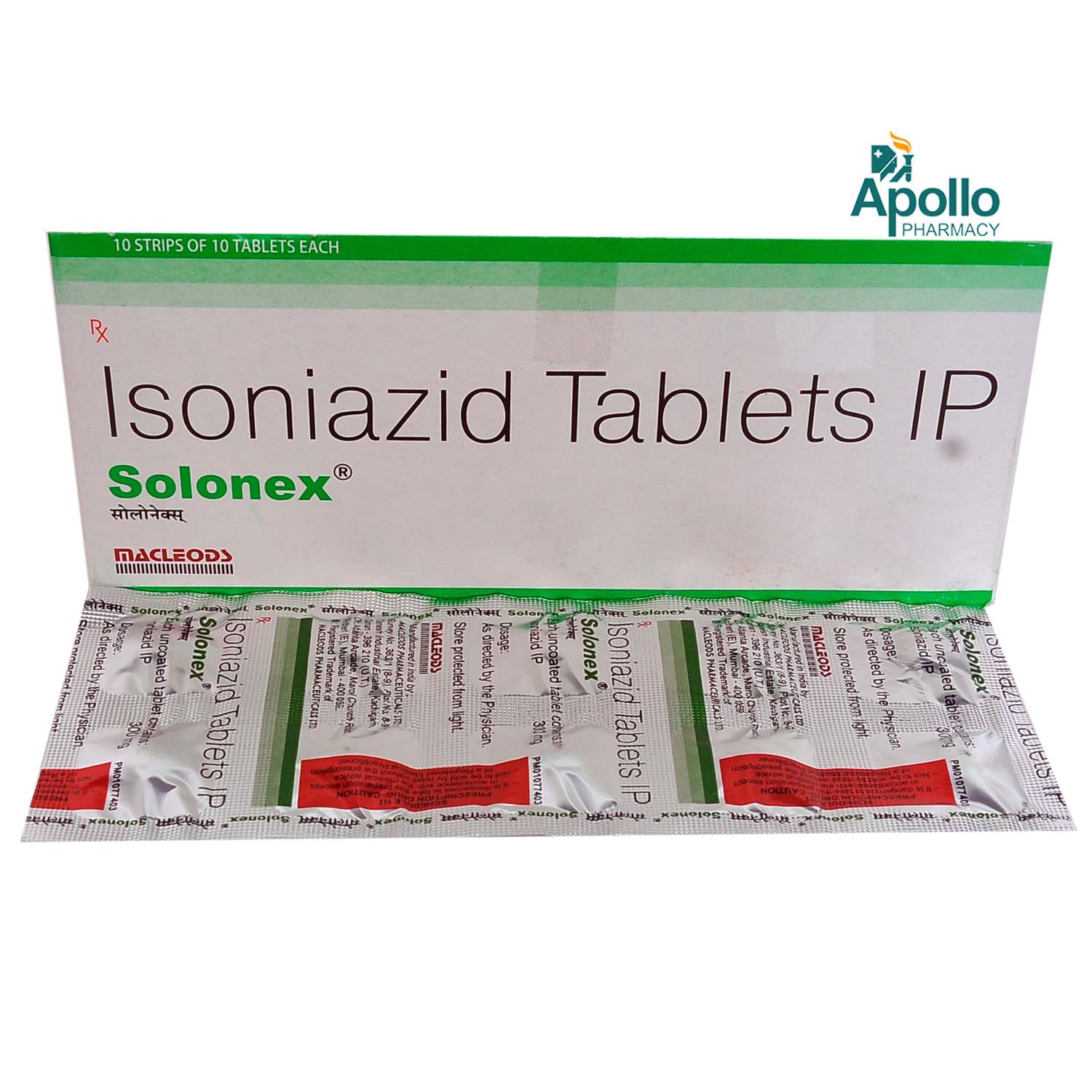
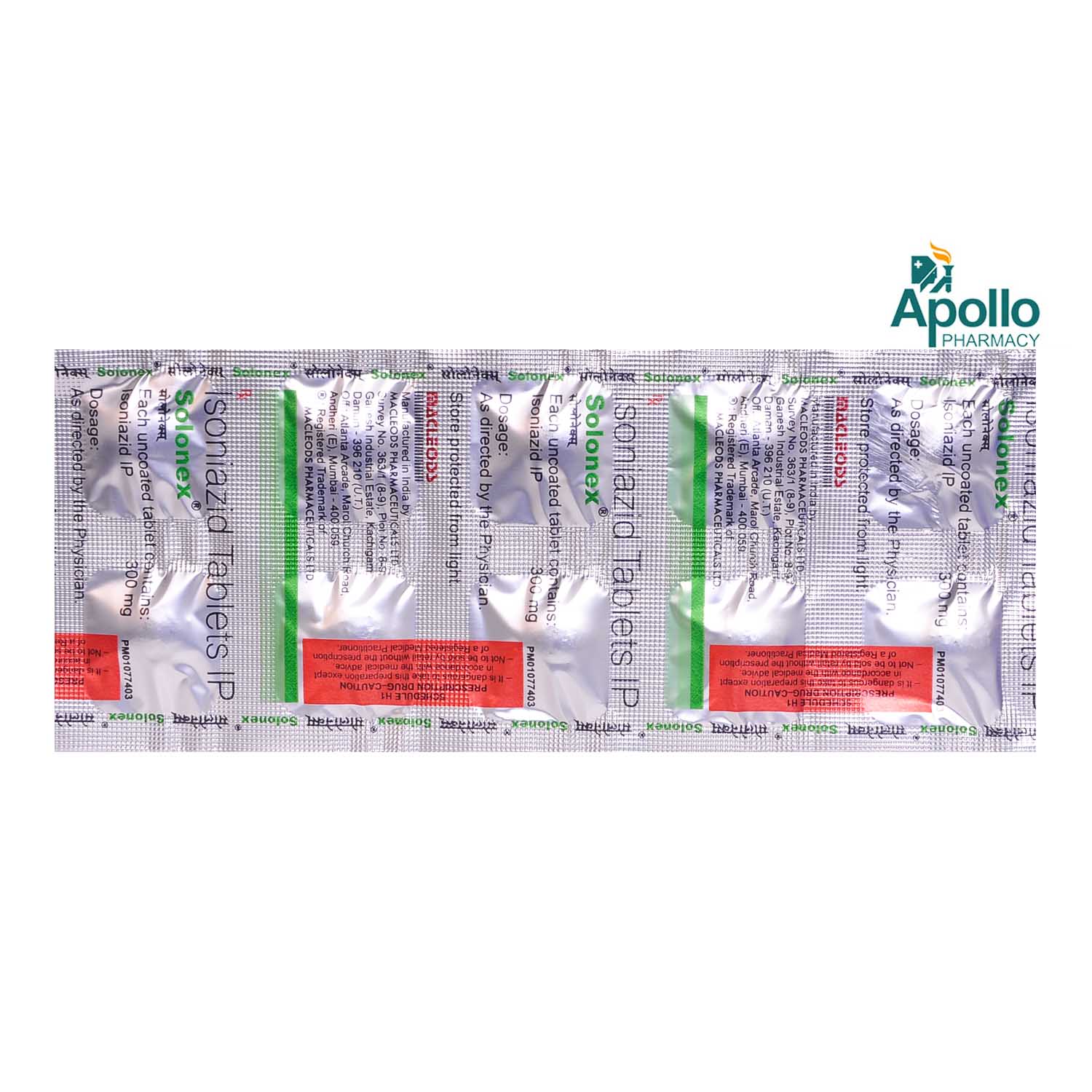
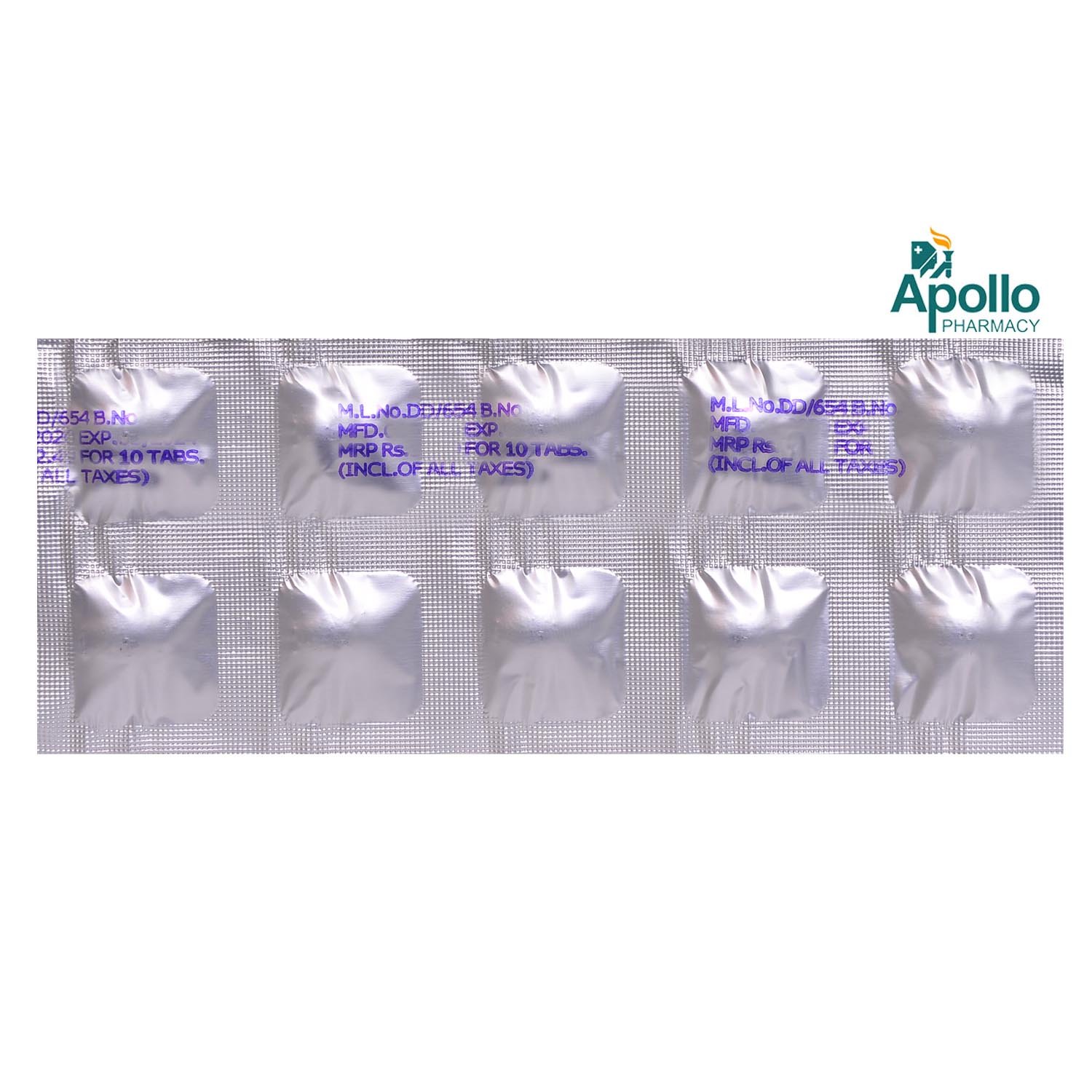





MRP ₹13.5
(Inclusive of all Taxes)
₹2.0 Cashback (15%)
Provide Delivery Location
Online payment accepted
 Prescription drug
Prescription drugWhats That
Composition :
Manufacturer/Marketer :
Consume Type :
Return Policy :
Expires on or after :
About Solonex Tablet
Solonex Tablet belongs to the group of medicines called anti-tubercular agents primarily used to treat and prevent tuberculosis (TB). Tuberculosis is an infectious bacterial disease that mainly affects the lungs, but it can also spread to other body parts such as the kidneys, brain, spine, and bone marrow. Solonex Tablet does not work against infections caused by the virus.
Solonex Tablet contains isoniazid, an antibiotic that works by preventing bacteria from producing mycolic acids, an enzyme required for cell wall formation (protective coating). As a result of the disturbance in their metabolism, bacteria that lack a cell wall die and burst. Thus, Solonex Tablet inhibits the spread of infection by acting against the bacteria Mycobacterium tuberculosis, which causes tuberculosis.
Take Solonex Tablet as prescribed. Use Solonex Tablet for as long as your doctor has prescribed it based on your medical condition. In some cases, you may experience fever, dizziness, nausea, stomach upset, loss of appetite, constipation, tiredness, numbness, or tingling in the feet or hands as side effects of Solonex Tablet . Most of these side effects do not require medical attention and gradually resolve over time. However, if any of these side effects persist or worsen, please consult your doctor.
If you are allergic to Solonex Tablet or any other medicines, please tell your doctor. If you are pregnant or breastfeeding, please inform your doctor before taking Solonex Tablet . Solonex Tablet may cause mental health problems, fits, or optic neuritis (swelling of the optic nerve that may cause vision loss) in some people. Therefore, avoid driving if you experience any of these symptoms after taking Solonex Tablet . Avoid foods and drinks containing histamine or tyramine such as cured meat, matured cheese, soya, tuna, salmon, mackerel, wine, and beer while on treatment with Solonex Tablet as they might interact with this medicine. If you have fits, diabetes, HIV infection, malnutrition, kidney or liver problems, or have suffered from psychosis (mental disturbances), inform your doctor before taking Solonex Tablet .
Uses of Solonex Tablet
Directions for Use
Medicinal Benefits
Solonex Tablet contains isoniazid, an antibiotic used to treat and prevent tuberculosis. Solonex Tablet prevents bacteria from producing mycolic acids, which are required for the formation of cell walls (protective coating). Additionally, Solonex Tablet may combine with an enzyme that interferes with bacterial cell metabolism. Bacteria die as a result of the disruption in their metabolism and the lack of a cell wall. As a result, it kills Mycobacterium tuberculosis bacteria that causes tuberculosis (TB) and eliminates the infection.
Storage
- If you have excess nerve pain and numbness, soak in Epsom salt and warm water. This can help ease the pain and associated discomfort.
- Use compression socks and make sure to rest for a while to get relief from pain.
- Avoid smoking and intake of alcohol or fluids that aggravate the pain.
- Massage your feet or affected area often to get relief from pain. Take the medication prescribed by your doctor without fail.
- Inform your doctor about the nausea and discuss possible alternatives to the medication or adjustments to the dosage.
- Divide your daily food intake into smaller, more frequent meals to reduce nausea.
- Opt for bland, easily digestible foods like crackers, toast, plain rice, bananas, and applesauce.
- Avoid certain foods that can trigger nausea, such as fatty, greasy, spicy, and smelly foods.
- Drink plenty of fluids, such as water, clear broth, or electrolyte-rich beverages like coconut water or sports drinks.
- Use ginger (tea, ale, or candies) to help relieve nausea.
- Get adequate rest and also avoid strenuous activities that can worsen nausea.
- Talk to your doctor about taking anti-nausea medication if your nausea is severe.
- Record when your nausea occurs, what triggers it, and what provides relief to help you identify patterns and manage your symptoms more effectively.
- Preventing Vomiting (Before it Happens)
- Take medication exactly as prescribed by your doctor. This can help minimize side effects, including vomiting.
- Having a small meal before taking your medication can help reduce nausea and vomiting.
- Talk to your doctor about taking anti-nausea medication along with your prescribed medication.
- Managing Vomiting (If it Happens)
- Try taking ginger in the form of tea, ale, or candy to help alleviate nausea and vomiting.
- What to Do if Vomiting Persists
- Consult your doctor if vomiting continues or worsens, consult the doctor for guidance on adjusting your medication or additional treatment.
- Drink water or other clear fluids.
- To prevent worsening of pain, limit intake of tea, coffee, or alcohol.
- Include bland foods like rice, toast, crackers, and rice in your diet.
- Avoid lying down immediately after eating as it may cause indigestion or heartburn.
- Avoid acidic and spicy food as it may cause indigestion.
- Rest well; get enough sleep.
- Eat a balanced diet and drink enough water.
- Manage stress with yoga and meditation.
- Limit alcohol and caffeine.
- Physical activities like walking or jogging might help boost energy and make you feel less tired.
Drug Warnings
If you are known to be allergic to Solonex Tablet , please inform your doctor. If you are pregnant or breastfeeding, please inform your doctor before taking Solonex Tablet . Solonex Tablet may cause mental health problems, fits or optic neuritis (swelling of the optic nerve that may cause vision loss) in some people. Therefore, avoid driving if you experience any of these symptoms after taking Solonex Tablet . Avoid foods and drinks containing a high level of tyramine, such as fermented foods, cheese, cured meat, soya, tuna, salmon, mackerel, wine, and beer, while taking Solonex Tablet as they might cause drug-food interaction. Avoid alcohol consumption with Solonex Tablet as it may cause liver damage. If you have fits, diabetes, HIV infection, malnutrition, kidney or liver problems or have suffered from psychosis (mental disturbances), inform your doctor before taking Solonex Tablet .
Drug-Drug Interactions
Drug-Drug Interactions
Login/Sign Up
When Lomitapide is taken with Solonex Tablet, Solonex Tablet may increase the blood levels of lomitapide which leads to side effects.
How to manage the interaction:
Taking Solonex Tablet with Lomitapide is not recommended but can be taken if prescribed by a doctor. However, if you experience fever, chills, joint pain or swelling, unusual bleeding or bruising, skin rash, itching, exhaustion, nausea, vomiting, dark urine, light stools, and skin or eye yellowing, decreased hunger, consult the doctor.
When Solonex Tablet is taken with Regorafenib, it can increase the levels of Regorafenib leading to side effects.
How to manage the interaction:
Taking Regorafenib with Solonex Tablet is not recommended, it taken can be taken if prescribed by the doctor.
When Lovastatin is taken with Solonex Tablet, can increase the risk of myopathy (muscles problems), including rhabdomyolysis (a condition that causes your muscles to break down, which leads to muscle death).
How to manage the interaction:
Taking Solonex Tablet with Lovastatin is not recommended but can be taken if a doctor has prescribed it.
Co-administration of Rifabutin with Solonex Tablet can increase the risk of liver problems.
How to manage the interaction:
Although taking Rifabutin and Solonex Tablet together can cause an interaction, it can be taken if a doctor has suggested it. However, if you experience any symptoms like fever, chills, joint pain or swelling, unusual bleeding or bruising, a skin rash or itching, appetite loss, nausea, vomiting, or yellowing of the skin or the whites of your eyes, consult a doctor. Do not discontinue any medications without consulting a doctor.
Combining Solonex Tablet with Citalopram may raise Citalopram blood levels and increase the chance of certain adverse effects, including an abnormal heart rhythm.
How to manage the interaction:
Although taking Solonex Tablet and Citalopram together can cause an interaction, it can be taken if a doctor has suggested it. If you're having any of these symptoms like a fast or pounding heartbeat, feeling dizzy or lightheaded, or having trouble breathing, it's important to contact a doctor right away. Do not discontinue any medications without consulting a doctor.
Co-administration of Solonex Tablet and Halofantrine together can increase the chance of a serious abnormal heart rhythm.
How to manage the interaction:
Taking Solonex Tablet and Halofantrine together can possibly result in an interaction, it can be taken if a doctor has advised it. However, if you experience sudden dizziness, lightheadedness, fainting, breathing difficulty, or rapid heartbeat, consult a doctor immediately. Do not discontinue any medications without a doctor's advice.
Taking Solonex Tablet and Cholera, live attenuated together may reduce the effectiveness of the vaccine.
How to manage the interaction:
Although taking Solonex Tablet and Cholera, live attenuated together can cause an interaction, it can be taken if a doctor has suggested it. You shouldn't receive the cholera vaccination until at least 14 days after finishing your Solonex Tablet therapy in order to ensure an appropriate immune response. Do not stop using any medications without a doctor's advice.
Using Phenytoin together with Solonex Tablet may increase the effects of Phenytoin, which may increase the risk of side effects.
How to manage the interaction:
Although taking Phenytoin and Solonex Tablet together can result in an interaction, it can be taken if a doctor has prescribed it. However, if you experience jerky eye movements, slurred speech, loss of balance, shaking, muscle stiffness or weakness, nausea, vomiting, feeling dizzy, fainting, and slow or shallow breathing, consult a doctor immediately. Do not discontinue the medications without consulting a doctor.
The combined use of Solonex Tablet and Simvastatin will enhance the levels of Simvastatin, which increases the risk of side effects.
How to manage the interaction:
Co-administration of Simvastatin and Solonex Tablet can lead to an interaction, it can be taken if advised by a doctor. However, if you experience any unusual symptoms, consult the doctor. Do not stop using any medications without a doctor's advice.
When Halothane is taken with Solonex Tablet, can increase the side affects of liver.
How to manage the interaction:
Co-administration of Solonex Tablet with Halothane can possibly result in an interaction, but it can be taken if a doctor has advised it. However, if you experience symptoms such as fever, chills, joint pain or swelling, unusual bleeding or bruising, a skin rash or itching, appetite loss, nausea, vomiting, or yellowing of the skin or the whites of your eyes, consult a doctor right away. Do not stop using any medications without talking to a doctor.
Drug-Food Interactions
Drug-Food Interactions
Login/Sign Up
Dark Chocolate, Cocoa, Coffee, Energy Drinks With Caffeine, Green Tea, Kola Nut, Tea, Tiramisu
How to manage the interaction:
Taking caffeine containing products including chocolates(which contains caffeine) during Solonex Tablet treatment may lead to an interaction. Avoid caffiene and its products during treatment with Solonex Tablet.
Diet & Lifestyle Advise
- Pineapple juice might help soothe the symptoms of cough and cold. It also has anti-inflammatory and mucolytic properties.
- Vitamin C-rich foods such as kiwi, broccoli, and bell pepper help in improving the immune system.
- Avoid processed and fried foods.
- Warm ginger tea or warm soup can help in providing relief from a cough.
- Avoid foods and drinks containing histamine or tyramine such as cured meat, matured cheese, soya, tuna, salmon, mackerel, wine, and beer.
- Quit smoking and avoid alcohol consumption.
Side Effects of Solonex Tablet
- Fever
- Dizziness
- Nausea
- Stomach upset
- Loss of appetite
- Constipation
- Tiredness
- Numbness or tingling in the feet or hands
Habit Forming
Therapeutic Class
Solonex Tablet Substitute

Product Substitutes
Author Details
We provide you with authentic, trustworthy and relevant information
Drug-Diseases Interactions
Drug-Diseases Interactions
Login/Sign Up
FAQs
Solonex Tablet contains isoniazid, an antibiotic used to treat and prevent tuberculosis. Solonex Tablet prevents bacteria from producing mycolic acids, which are required for the formation of cell walls (protective coating). Additionally, Solonex Tablet may combine with an enzyme that interferes with bacterial cell metabolism. Bacteria die as a result of the disruption in their metabolism and the lack of a cell wall. As a result, it kills Mycobacterium tuberculosis bacteria that causes tuberculosis (TB) and eliminates the infection.
It is not recommended to take Solonex Tablet with food. You are advised to take Solonex Tablet on an empty stomach at least 1 hour before a meal or 2 hours after a meal for better absorption.
You are recommended to avoid foods and drinks containing histamine or tyramine such as cured meat, matured cheese, soya, tuna, salmon, mackerel, wine, and beer as they may interact with Solonex Tablet and cause adverse effects such as sweating, headache, dizziness, light-headedness, flushing (reddening of the skin), fainting due to low blood pressure, uneven, fast or forceful heartbeat.
Yes, Solonex Tablet may cause liver problems in some patients. However, please consult your doctor if you notice symptoms such as yellowing of eyes or skin, dark urine, pale stools, weakness, loss of appetite, nausea or vomiting. Your doctor may monitor your liver function while on treatment with Solonex Tablet .
You are advised to consult a doctor before taking phenytoin with Solonex Tablet as taking these medicines together may increase the levels of phenytoin in the blood and cause toxic effects. However, if you experience dizziness, vomiting, confusion or nausea, please consult your doctor.
Please do not stop taking Solonex Tablet suddenly without consulting your doctor as it may cause withdrawal symptoms such as irritation, nervousness, difficulty in sleeping, headache or having more dreams. Therefore, take Solonex Tablet for as long as your doctor has prescribed it, and if you experience any difficulty while taking Solonex Tablet , please consult your doctor.
Solonex Tablet is not recommended for patients suffering from fits as it may increase the risk of recurring fits. Therefore, it is advised to inform your doctor if you have a history of fits before taking Solonex Tablet .
Drug-Drug Interactions Checker List
- CARBAMAZEPINE
- THEOPHYLLINE
- PREDNISOLONE
- PHENOBARBITAL
- VALPROIC ACID
- FLURAZEPAM
- TRIAZOLAM
- DIAZEPAM
- WARFARIN
- PHENINDIONE
- PROCAINAMIDE
- ALFENTANIL
- MIDAZOLAM
- HALOPERIDOL
- CHLORPROMAZINE
- PARACETAMOL
- PHENYTOIN
- KETOCONAZOLE
Special Advise
- Your doctor may advise you to get regular blood tests while taking Solonex Tablet to monitor your liver function.
- Consult a pulmonologist or lung specialist if you have had a bad cough for 3 weeks or longer, chest pain, coughing up blood or sputum from deep inside the lungs.
A monthly liver function test is advisable while using Solonex Tablet .
Disease/Condition Glossary
Tuberculosis (TB): It is an infectious bacterial disease that affects the lungs, but it could also spread to other body parts such as the kidneys, brain, spine, and bone marrow. Tuberculosis is caused by a bacteria named Mycobacterium tuberculosis. It is a contagious disease that can spread to others through small droplets released into the air by a person suffering from tuberculosis. Symptoms include a cough that lasts for a few weeks, pain while coughing or normal breathing, unexplained fatigue, fever, night sweats, loss of appetite, and weight. People who smoke or consume alcohol, people diagnosed with HIV, and immune system problems are more likely at risk of developing active TB.

Have a query?
Buy best Infections & Infestation products by
Cipla Ltd
Macleods Pharmaceuticals Ltd
Alkem Laboratories Ltd
Lupin Ltd
Abbott India Ltd
Sun Pharmaceutical Industries Ltd
Mankind Pharma Pvt Ltd
Micro Labs Ltd
Aristo Pharmaceuticals Pvt Ltd
FDC Ltd
Intas Pharmaceuticals Ltd
Glenmark Pharmaceuticals Ltd
Ipca Laboratories Ltd
Torrent Pharmaceuticals Ltd
Zydus Healthcare Ltd
Biochem Pharmaceutical Industries Ltd
Zuventus Healthcare Ltd
United Biotech Pvt Ltd
Hetero Drugs Ltd
Emcure Pharmaceuticals Ltd
Alembic Pharmaceuticals Ltd
Indoco Remedies Ltd
Fusion Health Care Pvt Ltd
Dr Reddy's Laboratories Ltd
Leeford Healthcare Ltd
Cadila Healthcare Ltd
Wockhardt Ltd
Zydus Cadila
GlaxoSmithKline Pharmaceuticals Ltd
Morepen Laboratories Ltd
Blue Cross Laboratories Pvt Ltd
Cadila Pharmaceuticals Ltd
Converge Biotech Pvt Ltd
Elder Pharmaceuticals Ltd
Hetero Healthcare Pvt Ltd
Pfizer Ltd
AAA Pharma Trade Pvt Ltd
Gufic Bioscience Ltd
Mylan Pharmaceuticals Pvt Ltd
Corona Remedies Pvt Ltd
Wallace Pharmaceuticals Pvt Ltd
Apex Laboratories Pvt Ltd
Medishri Healthcare Pvt Ltd
Akumentis Healthcare Ltd
Alniche Life Sciences Pvt Ltd
Hegde & Hegde Pharmaceutica Llp
Veritaz Healthcare Ltd
Ranbaxy Laboratories Ltd
Koye Pharmaceuticals Pvt Ltd
Shreya Life Sciences Pvt Ltd
Overseas Health Care Pvt Ltd
Biocon Ltd
Indchemie Health Specialities Pvt Ltd
Medley Pharmaceuticals Ltd
Brinton Pharmaceuticals Ltd
J B Chemicals & Pharmaceuticals Ltd
Unifaith Biotech Pvt Ltd
Ajanta Pharma Ltd
Biochemix Health Care Pvt Ltd
Natco Pharma Ltd
Samarth Life Sciences Pvt Ltd
Unichem International
Laborate Pharmaceuticals India Ltd
Unipark Biotech Pvt Ltd
Zymes Bioscience Pvt Ltd
Indiabulls Pharmaceuticals Pvt Ltd
Neon Laboratories Ltd
Vasu Organics Pvt Ltd
DR Johns Lab Pharma Pvt Ltd
East West Pharma India Pvt Ltd
La Renon Healthcare Pvt Ltd
Medgen Drugs And Laboratories Pvt Ltd
Novartis India Ltd
Canixa Life Sciences Pvt Ltd
Icarus Health Care Pvt Ltd
Lincoln Pharmaceuticals Ltd
Celon Laboratories Pvt Ltd
Concept Pharmaceuticals Ltd
Klm Laboratories Pvt Ltd
Nicholas Piramal India Ltd
Systopic Laboratories Pvt Ltd
Yuventis Pharmaceuticals
Capital Pharma
German Remedies Ltd
Pristine Pearl Pharma Pvt Ltd
Unison Pharmaceuticals Pvt Ltd
Aurz Pharmaceutical Pvt Ltd
Clover Health Care Pharma
Kepler Healthcare Pvt Ltd
Allites Life Sciences Pvt Ltd
Auspharma Pvt Ltd
Intra Life Pvt Ltd
Jolly Healthcare
Linux Laboratories Pvt Ltd
Ozone Pharmaceuticals Ltd
Cachet Pharmaceuticals Pvt Ltd
Comed Chemicals Ltd
Delcure Life Sciences Ltd
Fresenius Kabi India Pvt Ltd
Khandelwal Laboratories Pvt Ltd
Alcohol
Unsafe
Avoid alcohol consumption while on treatment with Solonex Tablet as it may increase the risk of liver damage. Please consult your doctor in case of any concerns.
Pregnancy
Safe if prescribed
If you are pregnant, consult your doctor before taking Solonex Tablet . Your doctor may prescribe this medicine if only the benefits outweigh the risks.
Breast Feeding
Safe if prescribed
Solonex Tablet is excreted in breast milk in low quantities. If you are breastfeeding, consult your doctor before taking Solonex Tablet . Your doctor may prescribe this medicine if only the benefits outweigh the risks.
Driving
Unsafe
Solonex Tablet may cause mental health problems, fits or optic neuritis (swelling of the optic nerve that may cause vision loss) in some people. Therefore, avoid driving if you experience any of these symptoms after taking Solonex Tablet .
Liver
Caution
Take Solonex Tablet with caution, especially if you have a history of Liver diseases/conditions. Your doctor may adjust the dose of this medicine or prescribe a suitable alternative based on your condition.
Kidney
Caution
Take Solonex Tablet with caution, especially if you have a history of Kidney diseases/conditions. Your doctor may adjust the dose of this medicine or prescribe a suitable alternative based on your condition.
Children
Caution
Solonex Tablet is not recommended for children below 3 months of age. However, in children above 3 months, Solonex Tablet should be used under medical supervision.


